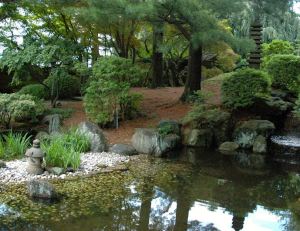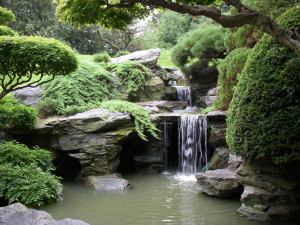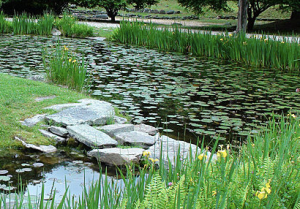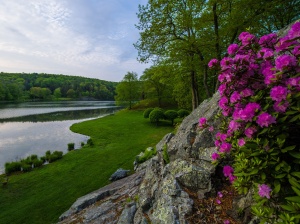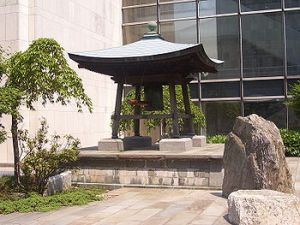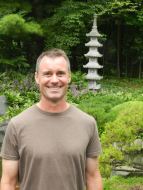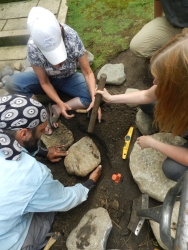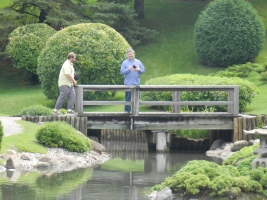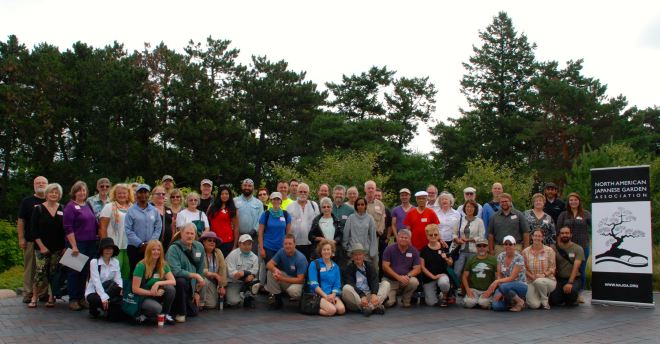On October 1 and 2, the North American Japanese Garden Association (NAJGA) is coming to the New York area to celebrate the history and the sustainable future of its Japanese gardens in the symposium and tour entitled “Fostering Mature Cultural Landscapes: The Japanese Gardens In New York.” NAJGA is a non-profit organization that promotes the art, craft and heart of Japanese gardens in the United States and Canada.
The Japanese garden at Kykuit and the Japanese Hill-and-Pond Garden at Brooklyn Botanic Garden are both a hundred years old.
Two New York gardens are a hundred years old, and all of them are at the forefront of the movement to preserve the legacy of Japanese Gardens in North America by fostering their relevance for our society. The October 1 garden history symposium will be held at The Pocantico Center, Tarrytown, NY. It features four speakers who care for and manage these gardens.
- Stephen Morrell, Director, John P. Humes Japanese Stroll Garden
- Brian Funk, Curator, Japanese Hill-and-Pond Garden at the Brooklyn Botanic Garden
- Cynthia Altman, Curator, art collections and gardens at Kykuit, the Rockefeller estate.
- Kate Kerin, Landscape Curator, Innisfree Garden as well as garden historian
- Kendall Brown, Professor of Asian Art History, California State University Long Beach and NAJGA’s Board President
The talks will be followed by an afternoon guided tour of the Japanese garden and the sculpture garden built by the Rockefeller family at Kykuit in Tarrytown, NY.
The coach garden tour on October 2 will take participants from the Brooklyn Botanic Garden’s Japanese-Hill-and-Pond Garden, to the United Nations Peace Bell Garden in NYC, to the Hammond Museum and Japanese Stroll Garden in North Salem, NY, and then to the Innisfree Garden in Millbrook, NY.
The Brooklyn Botanic Garden tour includes a visit of the special exhibition of work by the famed Japanese-American sculptor and garden-designer Isamu Noguchi. The exhibition celebrates the garden’s centenary.
The visit to the UN Peace Bell Garden, which is not normally open to the public, is an exclusive opportunity for tour participants. The historic UN Peace Bell, donated by the United Nations Association of Japan more than 60 years ago, was just recently reinstated to this newly renovated garden designed by Shin Abe of ZEN Associates. Japan’s Ambassador to the United Nations Motohide Yoshikawa will personally lead the tour. Mr. Yoshikawa was instrumental to the creation of the garden 15 years ago.
The Hammond Museum & Japanese Stroll Garden, John P. Humes Japanese Stroll Garden, Innisfree Garden and the UN Peace Bell Garden
“The rich history of Japanese gardens in New York may come as a surprise to many. New York City and surrounding areas have in fact produced more Japanese gardens than almost any part of North America,” says Dr. Brown, who is also the author of the popular book “Quiet Beauty: The Japanese Gardens of North America.”
He adds: “NAJGA seeks to examine the legacy of history gardens. It also provides practical wisdom for working garden professionals, scholars, and back-yard enthusiasts who create, maintain, study, and enjoy Japanese gardens as compelling spaces in our modern world.”
The two-day event is open to the public. Participation fee: 2-day attendance – $190 for NAJGA members, $250 for general public. 1-day attendance (October 1 OR October 2 only) – $95 for NAJGA members, $125 for general public. For more details and to register, go to: www.najga.org.

